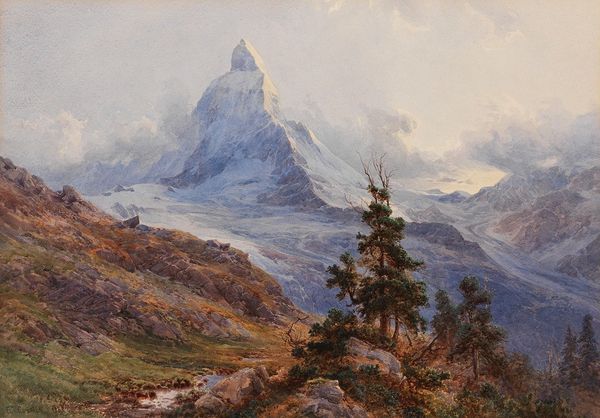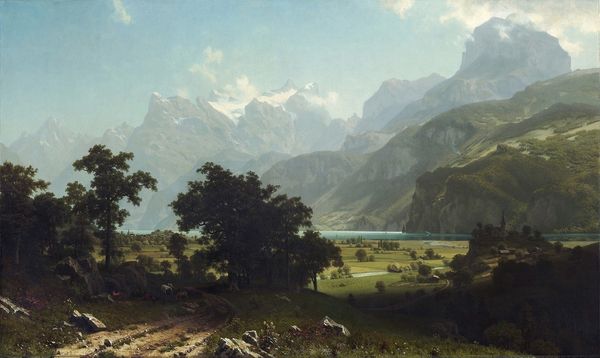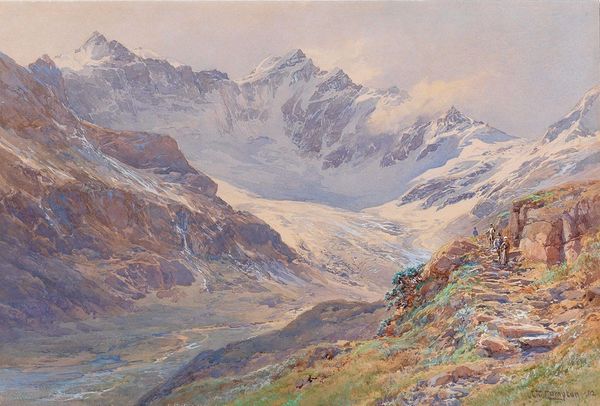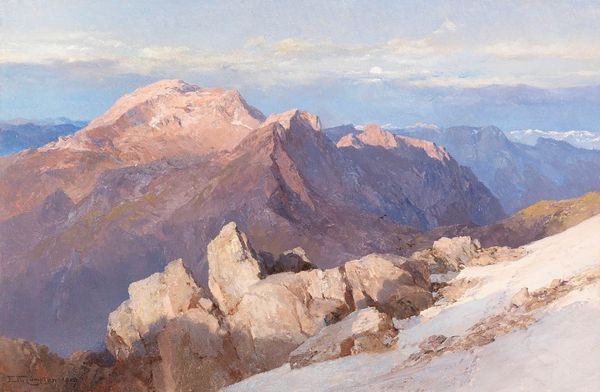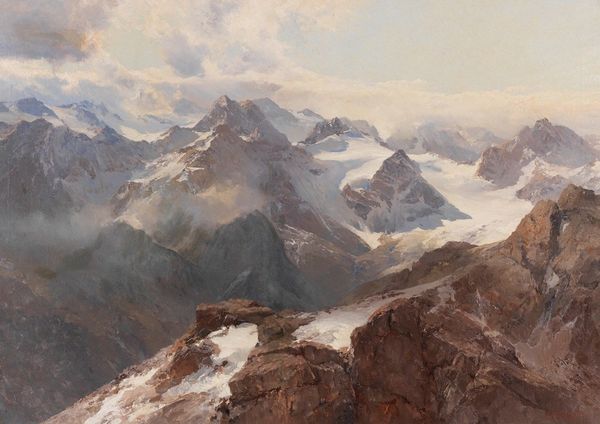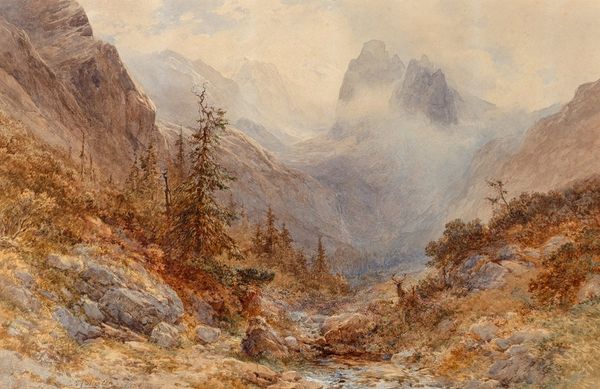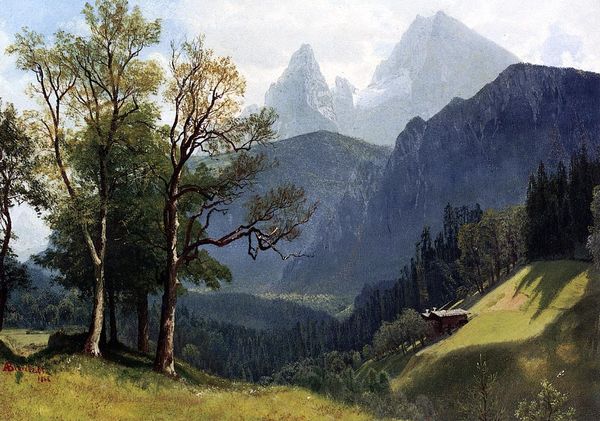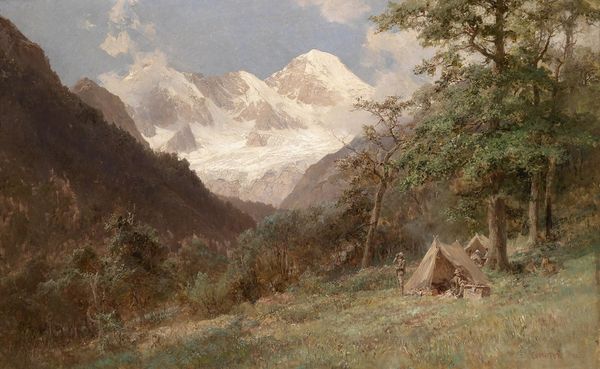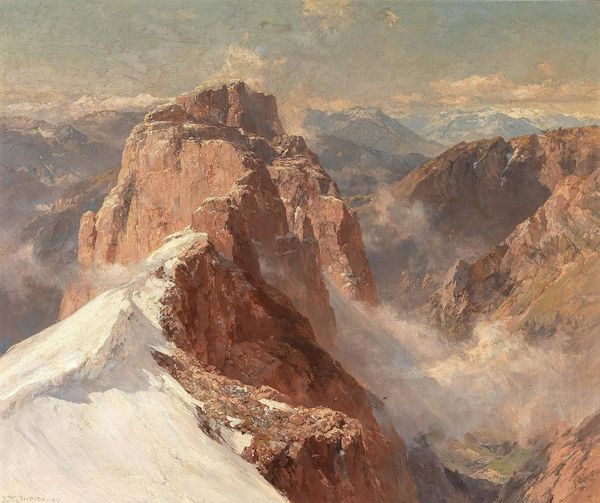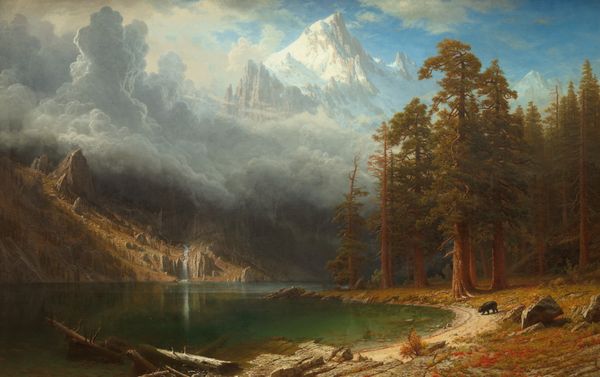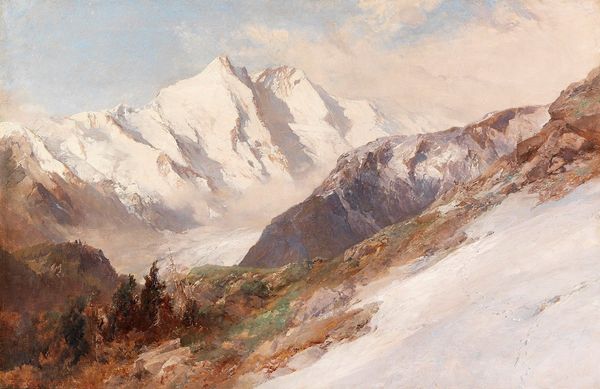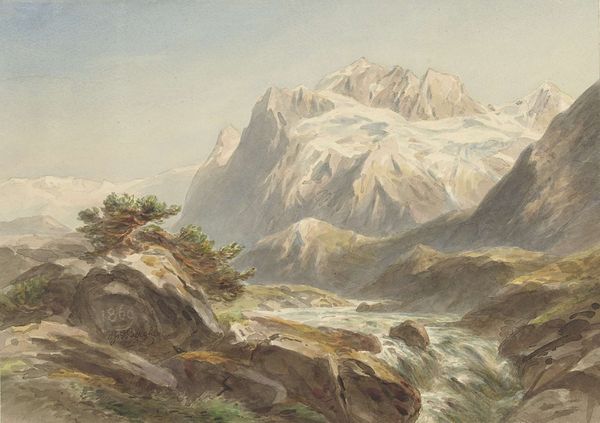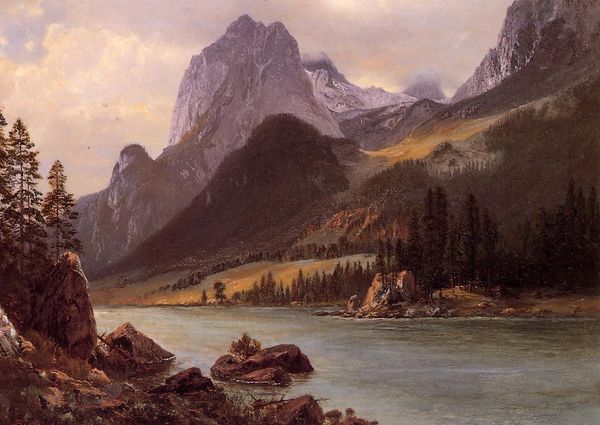
Copyright: Public Domain: Artvee
Editor: Here we have Edward Theodore Compton’s oil painting, *A view of Mount Sassolungo*, from 1914. The light seems to give the mountain a rosy glow, almost as if it’s alive. What do you make of this depiction? Curator: Notice how the mountain isn't just a geographical feature but almost a figure of authority? In many cultures, mountains are viewed as sacred places, the meeting point between heaven and earth. Compton imbues Sassolungo with a similar sense of the sublime. Editor: Sublime in what sense? Curator: As in evoking awe and reverence, almost a spiritual power. The romanticists often used landscape to elicit emotional and psychological states, rather than simply documenting the visible world. Notice how light isn't merely illuminating the peak but also transforming it. That alpenglow hints at transience and transcendence. Editor: So it's more than just a pretty view. It represents something larger. Curator: Precisely! Think of the visual vocabulary: upward reaching forms suggesting aspiration, light symbolizing revelation. Even the inclusion of that lone tree in the foreground—a common symbol for resilience and connection to the earth—frames the mountain, urging us to interpret the land as something both eternal and deeply personal. What emotions does the scene provoke in you? Editor: A feeling of calm but also of insignificance in the face of something so grand. It makes you think about your place in the world. Curator: That’s exactly the sort of cultural memory that landscape paintings like this attempt to tap into – a collective, shared experience of awe that transcends time. Editor: I didn't realize landscapes could be so rich with symbolism. I'll never look at a mountain the same way again.
Comments
No comments
Be the first to comment and join the conversation on the ultimate creative platform.
